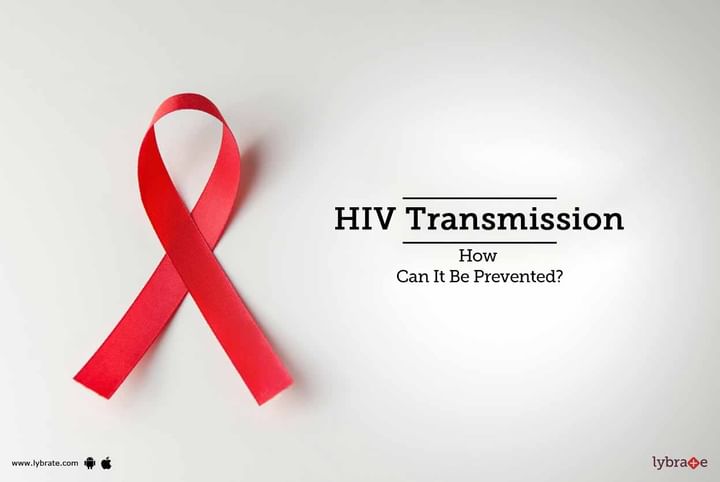HIV Transmission - How Can It Be Prevented?
HIV or the human immunodeficiency virus is a retroviral agent that causes the immune system of the body to weaken and lead to cause the acquired immune deficiency syndrome (AIDS). It is now treatable. Research is being conducted all over the world to formulate a targeted drug therapy for combating this life-threatening disease. No vaccine is available, which renders the world population highly susceptible to contract the infection.
HIV infection spreads from an infected person through contact with certain bodily fluids like blood and semen. Spread from one human being to another is called as transmission of HIV. Mother to child transmission, i.e. perinatal transmission is also common. Healthcare and hospital staff are at a great risk of occupational transmission. Other causes of transmission include sharing intravenous drug equipment, needle prick injury, organ transplantation and artificial insemination. Since vaccination and targeted drug therapy for remission are not available, prevention strategies play an important role in curbing the spread of infection.
A three-level prevention strategy is implemented for HIV infection.
- Primary prevention- Activities that focus on prevention of uninfected people being infected.
- Secondary prevention- Aimed at the provision of proper health care and behavioral facilities for HIV infected people like lifestyle changes, welfare rights advice, anti-discrimination measures.
- Tertiary prevention- Aimed at minimizing the symptoms of an infected person; includes the provision of prophylactic drugs and complementary therapies.
The risk avoidance approach for transmission of HIV infection includes certain measures like practicing mutual monogamy & delayed sexual activity in the young population. Safe and appropriate use of syringes and needles is advised. Unnecessary blood transfusions should be completely avoided. Routine screening of HIV antibody should be done.
Risk reduction approach propagates the mandatory use of condoms during sexual intercourse. Sexually transmitted diseases should be treated to avoid the risk of transmitting infection. Sterile syringes should be used. If blood transfusion is necessary, then blood transfused should be evaluated well to meet the quality standards.
- If HIV infection is suspected, anti-retroviral drug therapy should be started.
- The only universally approved method of HIV transmission during sexual activity is the use of condoms.
- Pharmaceutical methods for prevention and treatment include antibiotic drug therapy for sexually transmitted diseases, anti-retroviral drugs for infected individuals, pre and post-exposure prophylaxis and use of low space dead syringes.
- Pre-exposure prophylaxis is advised for people who are at a higher than average risk of contracting the infection.
- Drug therapy consisting of a combination of Tenofovir and Emtricitabine is prescribed, one per day.
- Visit the physician at regular intervals and routine screening is done. Post-exposure prophylaxis is considered to be effective if the treatment is started within an hour of exposure, to effectively reduce the risk of seroconversion. A drug combination of Emtricitabine, Tenofovir and Raltegravir is given.
- Social initiatives are undertaken to spread awareness and educate people regarding AIDS. Behavioral change and acceptance of social message is necessary to benefit from the social initiatives. Sex education, LGBT sex education and awareness, safe injection use programs, needle exchange programs, safe sex practice education are some social strategies implemented.
Prevention of transmission of HIV from mothers to children involves anti-retroviral drug therapy during pregnancy and post birth in the newborn child. Breastfeeding is avoided and bottle feeding is advised.



+1.svg)
